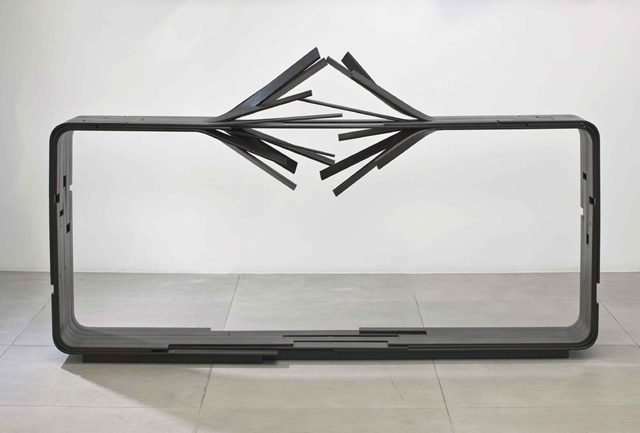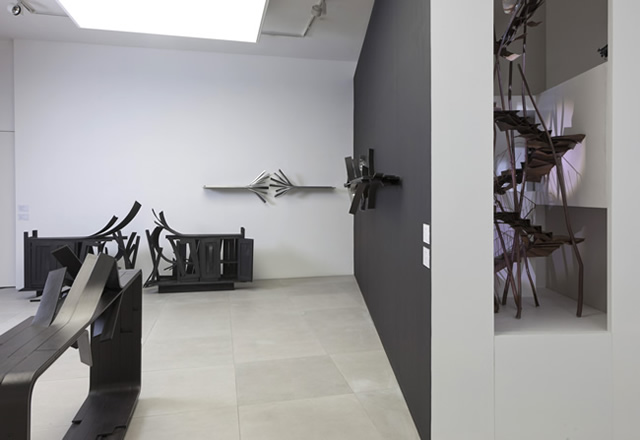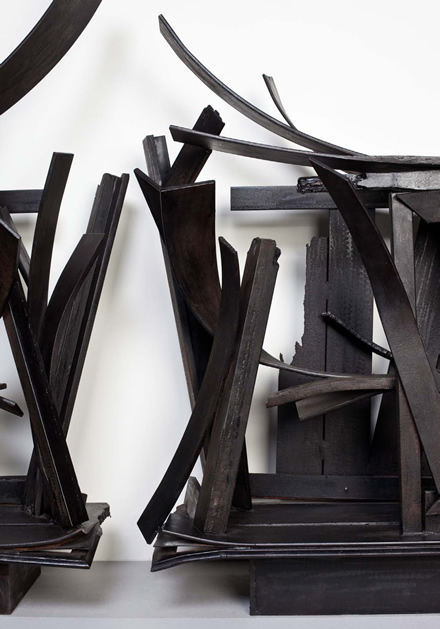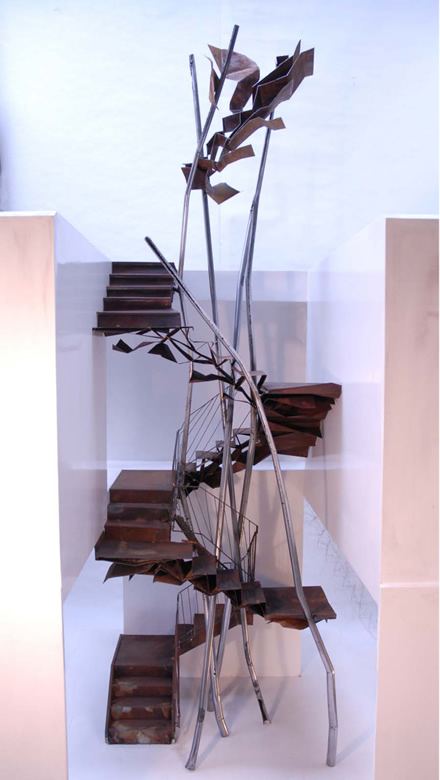Triple Threat Art of Vincent Dubourg at the Carpenters Workshop Gallery

So far, in this blog, I've seen exhibits of artists stretching the realm of a particular medium into a sculptural language: Both Angela de la Cruz and Rashid Rana's artworks blur the line between painting and sculpture. If you come to think of it, this is probably a natural progression, reflecting our human desire to stretch our limits and master as many disciplines as possible. This is a century of being multi-faceted, and multi-tasking after all. For us unlucky commoners deprived of any God-given talents, we can only call ourselves jacks of some trade, masters of what-nots. (That was a bit negative don't you think? Pach says we all need to strive to discover our talents and stay fearless. I am lucky to have my own personal life coach).

Another one of those lucky ones is Vincent Dubourg. Having studied Applied Arts, Furniture Design and Industrial Design, Vincent is, for me, a triple-threat artist. In an exhibit at the Carpenters Workshop Gallery in Albemarle Street in London, a gallery for contemporary design, the young French artist's works encompass the genre of architecture, furniture design and sculpture – confirming the fact that there are really no limits on what one can consider as art.
Challenging traditional standards of furniture design, Vincent's found objects seemed violently destroyed and yet beautifully intertwined with nature to effect poetic imagery. '"I like the idea of creating something beautiful out of something broken", Vincent says in an interview at the Wallpaper magazine.

Sideboards are destroyed in Double Buffet Nouvelle Zélande, and the wooden parts (actually of aluminium) are ripped open like tree branches. (In fact, this is the piece that stopped me in my tracks when I happened to pass by Carpenters Workshop Gallery) "When I first started with wood, it was like a game between two people, each trying to tame the other: a young branch, inflexible, and me, demanding. And this led us to find harmony together, which is translated into a dance of curves. It's only then that we're able to create an alphabet, which in turn brings with it sentences that make dialogue possible," Vincent says.

The destructive aspect in his art echoes a sort of Shadow-Esque Jungian archetype only to emerge finally as flights of visual poetry highlighting the relationship between man and nature. A staircase is dilapidated (a maquette) and grows like a tree house from the floor to the ceiling. In Vent Sur la Table, a deconstructed table balances on top of twigs. In Exile, an old suitcase is intertwined with branches which evokes a sense of nostalgia in the viewer.

Thanks to Stephanie Gabriele, Gallery Director of Carpenters Workshop Gallery for providing me with the photos!